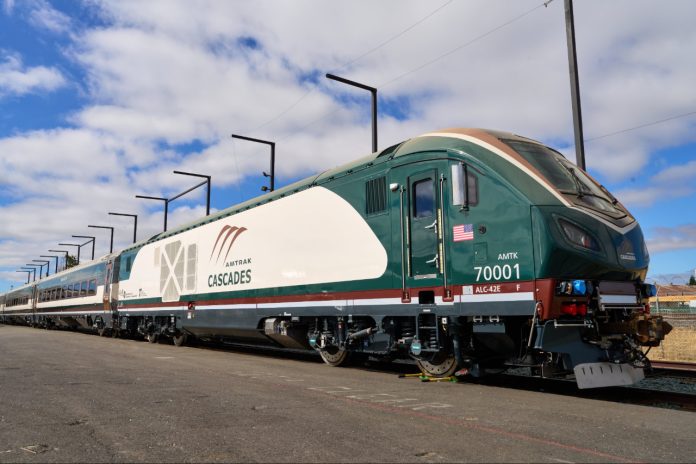
The Washington State Department of Transportation (WSDOT) this week provided railfans with a glimpse of the future of Amtrak Cascades, providing the first photos of the new “Airo” trainsets coming off the line as they head to Colorado for testing. Set to go into service along the Cascades corridor between Vancouver, B.C. and Eugene, Oregon by next year, these eight new trains will be the first to be delivered as part of a larger, nationwide order of 83 trainsets.
The new trains include a suite of features intended to increase passenger comfort and accessibility and will be welcome replacements for Cascades riders. This spring, the majority of the Cascades fleet was pulled from service after the discovery of widespread corrosion within the aging Horizons cars, with older Amfleet I cars dispatched cross-country to fill in. While all of the seven daily round trips on the Cascades schedule were quickly restored, the smaller trains mean passenger capacity has been more constrained than before.
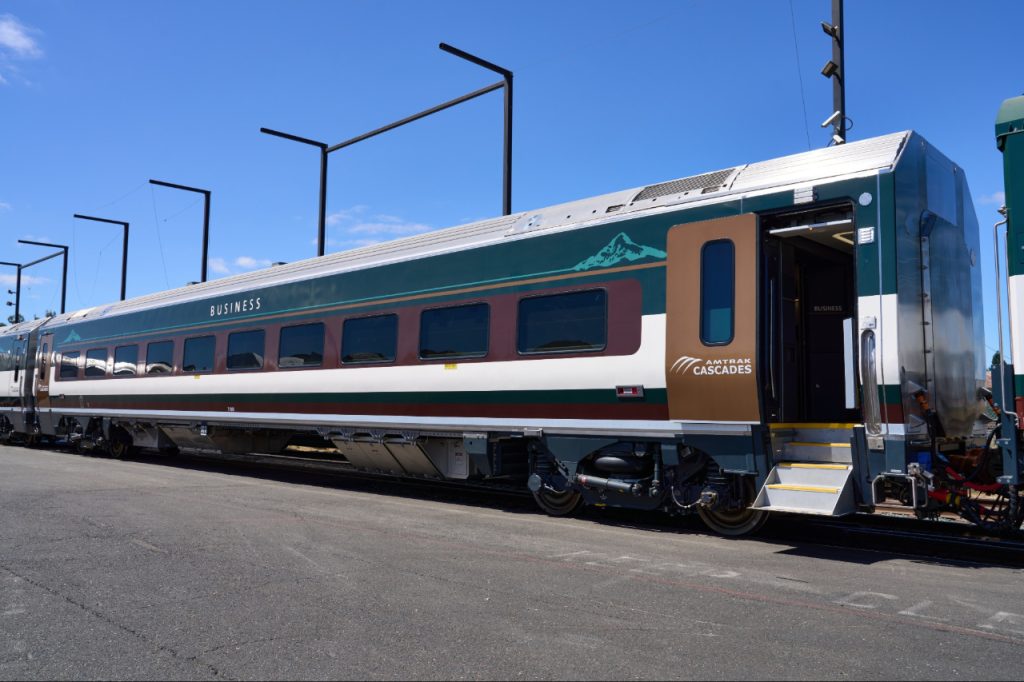
Along with a fully revamped cafe car, the Airo trains come with more ergonomic seats, dedicated power outlets, USB-C charging ports, and adjustable cup holders. New or improved accessibility features include integrated boarding equipment and inductive hearing technology to assist with onboard announcements. The restrooms on trains will come with touchless controls to improve sanitation.
Cascades riders have been clamoring for the new trainsets ever since Amtrak revealed preview renderings in 2022, as the manufacturer — Siemens — ramped up work.
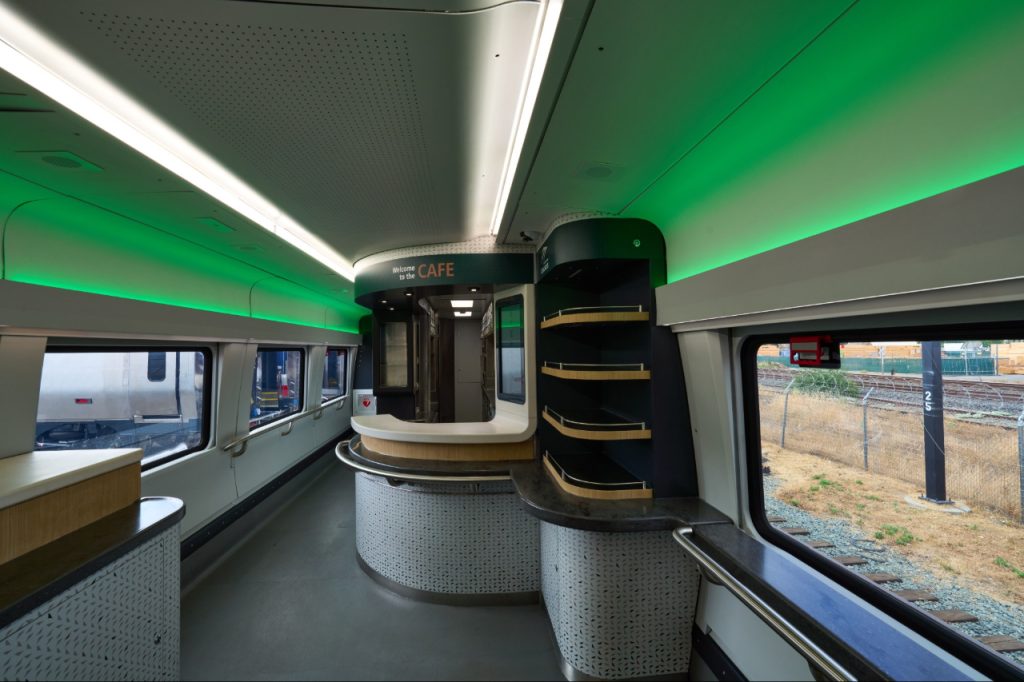
The $7.3 billion national purchase order for new Amtrak trains was largely funded by the 2021 Infrastructure Investment and Jobs Act, also known as the Bipartisan Infrastructure Law (BIL). That federal cash infusion also funded nearly $300 million in upgrades to Amtrak’s SoDo rail yard, just south Seattle’s King Street Station — a project that the incoming Trump Administration tried to take credit for with a new sign along a SoDo street. When complete, the new maintenance facility will handle the new Airo trains, and will be able to accommodate future expansion of the Cascades fleet.
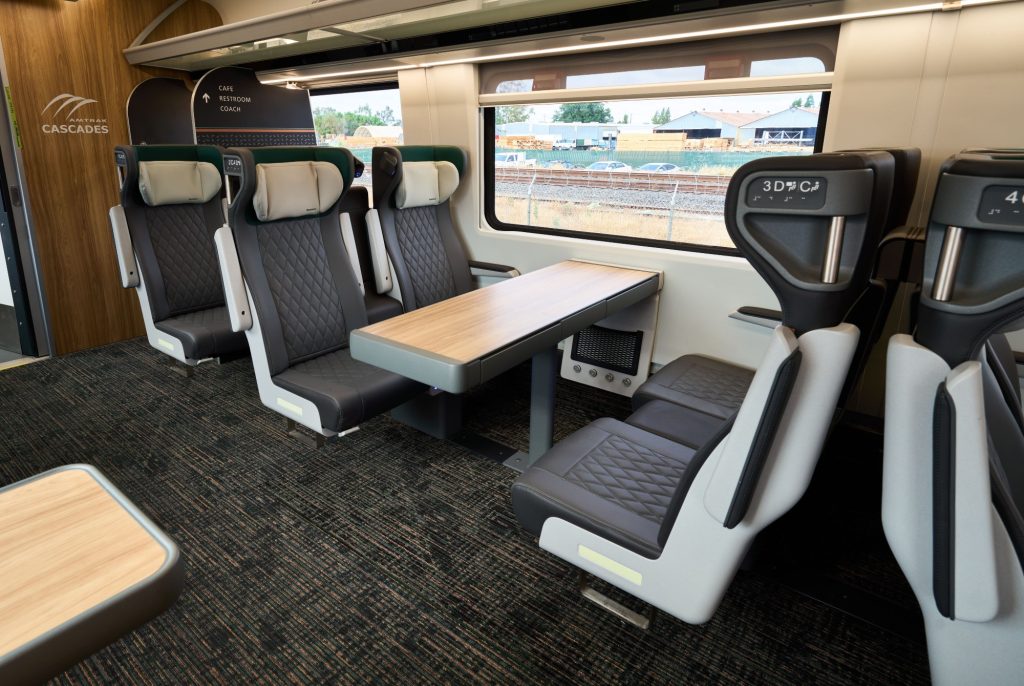
While the new cars will provide significantly improved fuel efficiency, the Airo cars are not expected to dramatically improve travel times, with most of the current Cascades corridor limited to 79 miles per hour under current federal regulations — partly a reaction to a deadly 2017 derailment during the maiden voyage under a higher speed limit. Despite the fact that the new Siemens trains can achieve a top speed of 125 mph, that’s unlikely to be realized without significant track improvements, which would have to be negotiated with BNSF, which owns much of the right-of-way.
Having to negotiate with BSNF for use of the corridor remains a main reason that Amtrak Cascades boasts incredibly poor performance when it comes to staying on time. The most recent performance report released by WSDOT, from 2024, showed on-time performance had once again slipped below the 50% mark after a brief increase to 55% in 2023.
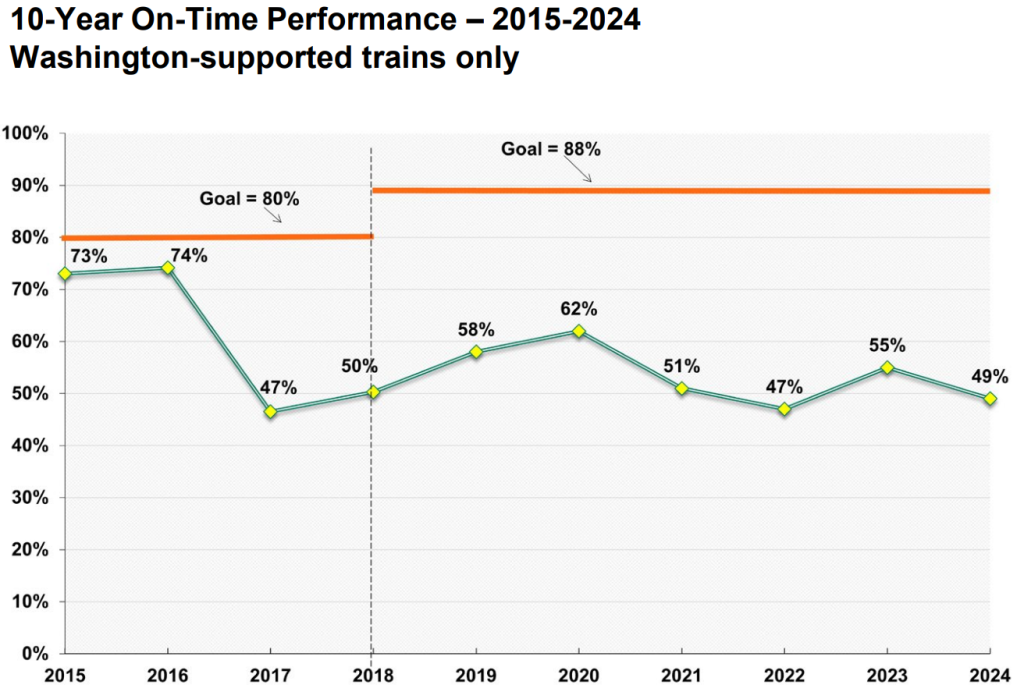
Earlier this year, the Washington State Legislature signaled an interest in exploring upgrades to the Amtrak Cascades routes, with the passage of House Bill 1837. Signed by Governor Bob Ferguson in May, that law sets an on-time performance benchmark of 88% and a goal of providing 14 daily round trips between Seattle and Portland, double the current number. Goals to improve train speed, however, were removed from the bill after concerns were raised by Republican lawmakers about creating an unfunded mandate.
Despite the relatively ambitious targets, the state likely won’t achieve its vision for Amtrak Cascades without federal help, and there’s considerable doubt about future federal funding levels for Amtrak. Earlier this month, a U.S. Senate committee approved an appropriations bill that included a 35% cut to freight and passenger rail compared to the amount authorized in the BIL. Congress is beginning to weigh a sequel to the Bipartisan Infrastructure Law, but the momentum — at least under Republican leadership — seems to be away from rail investments.
As that debate plays out, the new Airo trainsets are coming, and Cascades riders will be able to tout riding them before railfans in other areas of the country. Whether a foretaste of a feast to come or crumbs before a famine, their arrival on Pacific Northwest tracks will mark the beginning of a new era.
Ryan Packer has been writing for The Urbanist since 2015, and currently reports full-time as Contributing Editor. Their beats are transportation, land use, public space, traffic safety, and obscure community meetings. Packer has also reported for other regional outlets including BikePortland, Seattle Met, and PubliCola. They live in the Capitol Hill neighborhood of Seattle.

